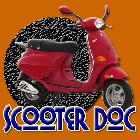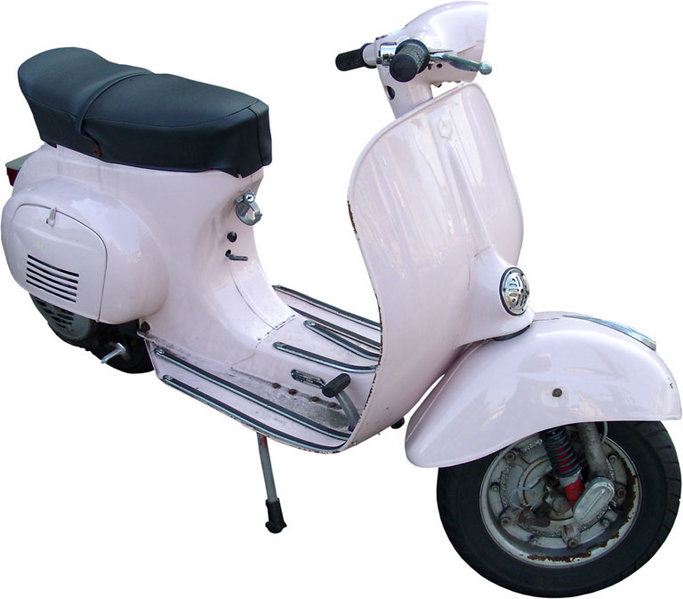Classic Motor Scooters
Site Map
What's New
Features
Scooters from Amazon.comYes Man, Scooters in Film
Larry Crowne and scootering
Helmet Free scootering
Scooters in a failing economy
Scooter Economy
Scooter ROI Analysis
Scooter pays for itself
Types of Motorscooters
Why ride a scooter?
Motorscooter FAQ
Buying Scooters Online
Join Our Mailing List
Recommend this site
Scooter Inspiration
Scooter EconomyMotorscooter Advantages
Motorscooter Disadvantages
Motorscooter Books
Motor Scooter Poetry
Business Scooter Travel
Motorscooter Posters
Motorscooters in California
Scooting in the UK
Green Scooting in China
Scooting in Italy
Motorscooters in Iraq
Motor Scooter History
The Ice-Cream Scooter
Pets and Motorscooters
RVs and Motorscooters
Gas vs. Electric Scooters?
Put-putting Pleasures
Recommended Scooters
Scooter Culture
Larry Crowne (film)
Dating and Scooter Culture
Motorscooter Freedom
Motor Scooter Image
Scooter Lib
Back to School on a scooter
Motor Scooter Music
Motorscooter Camping
Types of Motorscooters
Classic Motor ScootersItalian Motor Scooters
The Vespa Motorscooter
The Aprilia Motorscooter
Falcon Electric Scooters
50cc Motorscooters
Kymco Motorscooters
GT Chaunl Scooters
Chinese Motor Scooters
TANK Motorscooters
The RoadRunner Scooter
Roketa Motorscooters
The I-scooter
Moped Scooters
Mopeds
Scooter Choices
Best Scooter DealsThe Performance Scooter
The Luxury Scooter
The Minimalist Scooter
The Classic Scooter
The Basic Scooter
The I-scooter
The Electric Scooter
Stand-up Scooters
The Mobility Scooter
Used Motorscooters
California Legal Scooters
Toy Scooters
Practical matters
Trouble starting a scooterScooters and the Environment
Scooter Return On Investment Analysis
Motor Scooter Repair
The Scooter Commute
Scooter Repair Shops
Scooter Replacement Parts
Vespa Repair
Scheduled Maintenance
Fuel Efficient Driving
Essential Scooterist Kit
Passengers on a Scooter
Motor Scooter parking
Using the Kick Starter
Motor Scooter Batteries
Motor Scooter Stands
Rotating a Scooter
Cargo Storage Issues
Chinese Scooter Alarms
Scooter Roadside Assistance
Affordable Insurance
Scootering in groups
Motorscooter safety
Motorscooter SafetyDriving a Motorscooter
MSF Manual: Your Scooter
Scooters and Potholes
Important, before you drive
Motorscooter Helmets
All-weather Scootering
The Oily Path of Safety
Motorscooter Journal
Motorscooter JournalOff-highway scooter routes
The Scooterdoc
Scooter Choice Ethics
India Shuns Scooters
Left-handed Motorscooters
Other Types of Scooters
Mobility ScootersScooter-inspired Vehicles
Electric Motorscooters
The Three-wheel Scooter

Vespa Service In
Southern California
Classic Motor Scooters

The fascination with classic scooters has never really disappeared, though it has peaked at various times. Vespa celebrates 60 years and Lambretta has started up again.
Even though modern inexpensive scooters are now being made to mimmic the classic Italian designs (see inexpensive classic motorscooters), the original companies are also relaunching modern versions of their original classic machines.
Italy is the mother of the motor scooter with the classic scooters of Vespa and Lambretta (See Motor Scooter History). The two-stroke engines and manual transmissions of the early models, however, are likely to suffer a demise in the face of evolving emissions requirements and twist-and-go transmission technology (See Stepless Transmissions).
Nonetheless, in commemoration of its 60th anniversary, Vespa introduced the new LX line last year, and Lambretta has announced a return.
With movies such as "Roman Holiday" in 1953 and Felini's "La Dolce Vita" in 1960, scooters fascinated American enthusiasts (See Motor Scooter Image) and became a fashion statement in the 50s and 60s with the British "mod" movement, in addition to playing a role in low-cost utility transportation.
After the Italian scooter heyday, sales declined and Inocenti closed its Lambretta factory in Italy, though they continued to be produced in India for another decade.
Emissions standards, with which the two-stroke engines did not comply, forced Vespa out of the American market in the 80s. With subsequent increased emission requirements in Europe, Vespa has been forced to comply, thus reopening the US market as well. Sales continue to increase.

The new LX Vespa, like the ET and GT before it, uses a four-stroke engine which complies with all emission standards. They also use automatic transmissions, unlike the early classic machines. Classic scooter enthusiasts deplore this development but, though production of an emissions compliant two-stroke engine has been considered, and studies are being done to determine whether there is an adequate market to justify a model with a manual transmission, it appears that four stroke engines and stepless automatic transmissions are what will be found in the new wave of "classic" motor scooters, though some scooter purists may despute the "classic" designation of such machines. The Vespa PX 150 with its two-engine and manual shift is likely to be the last of its kind as it does not meet California emissions requrements and will fail to meet those scedule to be enacted shortly in Europe.
A new Lambretta scooter was presented at the Indianapolis Motorcycle Dealer Expo in March 2005 heralding a new age for the other classic Italian brand. To be manufactured by CMSI in North Carolina, they will have the classic Lambretta look of the 60s but a new four-stroke engine. Lambretta and Vespa are back in business.
Is classic design, image, and tradition -- a bigger factor than cost in determining what scooter to buy? That is a matter of debate. See Recommended Scooters. There are many modern high-quality classic-design scooters available now for very reasonable prices. See Classic Scooters.
For further reading, the classic scooter phenomenon is nicely covered in the student essay: Scootering in style: Vintage Italian motor scooters are hot By Karen Sloan.
Bookmark this page to: